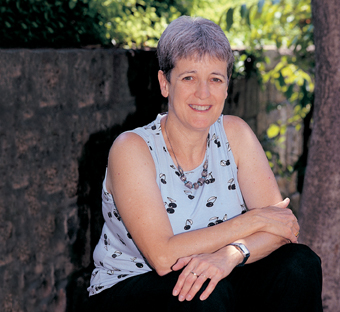Are you a journalist? Please sign up here for our press releases
Subscribe to our monthly newsletter:

Like any language, the lingo of scientific literature is understood by its readers and writers but unintelligible to nearly everyone outside the select group of those working and thinking in the field. To outsiders who know how to interpret the language, scientific papers are a fascinating window onto the world of a scientist. To high school science students, they could offer an engaging, real-life view of “how science is done,” if only the language barrier didn’t stand in their way.
The issue of understanding arose a number of years ago in the Science Teaching Department when several members were attempting to create a high school teaching unit on embryonic development – an especially complex subject that generally requires the mastery of a whole set of terms for key concepts and intricate processes. Clearly there was not enough time allotted in the curriculum to learn an entire scientific lexicon. Prof. Benjamin Geiger, then Dean of the Feinberg Graduate School (today Dean of the Faculty of Biology) proposed a new concept: Teach students how a developmental biologist thinks and works by having them read scientific research papers. Dr. Anat Yarden, whose background is in embryonic development, took up the idea.She developed a unique method of adapting scientific literature so that it could be read and understood by high school students.
The first textbook to come out of this initiative, The Secrets of Embryonic Development: Study through Research, contains adapted versions of three of the field’s groundbreaking articles along with background material, supplementary explanations, graphs and definitions. But the basic style and feel of the scientific papers were preserved, including the layout of the sections (abstract, introduction, methods, results and discussion) and the typical phrasing. In the process of creating the study materials, Yarden and her group found they had created a new genre of science writing, which they dubbed Adapted Primary Literature (APL). A second book followed the first: Gene Tamers: Studying Biotechnology through Research, and the books – used to teach matriculation-level biology – and the project behind them have begun to garner interest and spawn similar initiatives around the world.
Ultimately, Yarden would like to see APL used to teach areas of all the biology subjects studied for matriculation exams in high schools. As there is no shortage of exciting new scientific research, the articles could be continually updated, making the curriculum varied and pertinent. To help accomplish these goals, Yarden is bringing her method to those who teach science. Within the framework of the Caesarea Program – initiated this year at the Weizmann Institute to provide graduate education to outstanding high school teachers – she is starting a journal club. The club will encourage the teachers to read scientific articles, adapt them and use them in their classrooms. In this way, she hopes to extend the use of the method to more classrooms, as well as to broaden the subjects taught this way to include such fields as chemistry and physics.
Dr. Anat Yarden’s research is supported by the J&R Center for Scientific Research. Dr. Yarden is the incumbent of the Helena Rubinstein Career Development Chair.